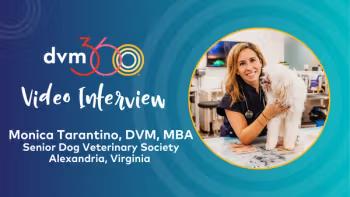
Aerodigestive disorders in French bulldogs
To support the health of their patients, veterinarians should take a careful history and educate clients on common gastrointestinal and respiratory conditions seen in the breed.
French bulldogs—now the most popular canine breed in America1—are known to have numerous disease predispositions, including respiratory and gastrointestinal diseases. There is growing recognition of the close relationship between diseases of these 2 body systems. In fact, some dogs with primary gastrointestinal disease may present with respiratory signs only. During a session at the 2024 Veterinary Meeting and Expo in Orlando, Florida, Aida I. Vientós-Plotts, DVM, PhD, DACVIM (SAIM), of the University of Missouri, College of Veterinary Medicine in Columbia discussed these conditions in French bulldogs and what general practitioners need to know about their diagnosis and management.2
Respiratory disorders
Many of the respiratory abnormalities seen in French bulldogs are related to their brachycephalic anatomy, which creates obstructions to airflow at the level of the nares, nasopharynx, and oropharynx. This can lead to laryngeal collapse, which should be suspected in any brachycephalic dog presenting with both stertor and stridor. Collapse occurs in 3 progressive stages and can be diagnosed during an upper airway examination2:
- Stage 1 has everted laryngeal saccules. This is the only stage that can be corrected surgically.
- Stage 2 has irreversible changes to the cartilage of the larynx caused by aryepiglottic collapse.
- Stage 3 includes collapse of the corniculate processes. It creates a complete obstruction and requires a permanent tracheostomy for treatment. Patients with this stage of collapse have a guarded prognosis.
In addition to screening for signs of laryngeal collapse, Vientós-Plotts recommended asking clients specific questions about the patient’s sleeping habits to evaluate for obstructive sleep apnea. Signs include episodes of apnea during sleep (more than 5) and any 1 of 4 behaviors observed by the owners: waking up gasping or choking, having low levels of activity or falling asleep while sitting or standing, breathing interruptions (apneic episodes), and sleeping in a position that is specific to improve breathing. “These are important to ask about,” said Vientós-Plotts. Patients with obstructive sleep apnea can develop secondary pulmonary hypertension, so an echocardiogram is recommended.
Sliding hiatal hernias
Brachycephalic dogs are more likely to have abnormal esophageal motility than other dogs, which can lead to several abnormalities, including sliding hiatal hernias and gastroesophageal reflux disease (GERD). French bulldogs are predisposed to sliding hiatal hernias.3 Many of these patients will present with respiratory signs despite this being a gastrointestinal (GI) disease. In one study, 44% of patients with hiatal hernias presented with only GI clinical signs, 35% had signs of both GI and respiratory disease and 25% presented with only respiratory signs.4 Compared to nonbrachycephalic dogs, brachycephalic patients with hiatal hernias tend to present younger and are more likely to present in respiratory distress.
“Think of the number of patients we are missing with GI disease if we only focus on respiratory signs,” said Vientós-Plotts. She recommended screening all brachycephalic dogs and any patients presenting with aspiration pneumonia for a sliding hiatal hernia. She shared that although “fluoroscopy is superior [diagnostically], you can still do plain radiographs and find some of these patients.” She recommended using a wooden spoon to place pressure on the abdomen during the lateral radiograph to increase the chances of identifying the hernia in the absence of fluoroscopy.
Gastroesophageal reflux disease (GERD)
Vientós-Plotts shared that clients may mention their pet regurgitates or vomits frequently, thinking it is normal. “Typical is not normal,” she stated, encouraging veterinarians to investigate this information. Brachycephalic patients presenting with cough should be suspected of having gastroesophageal reflux disease (GERD). Additional clinical signs can include lip licking, repetitive swallowing, regurgitation, nasal discharge, neck extension, and head bobbing. Patients that are predisposed to GERD include those that are obese, fed high fat diets, and have delayed gastric emptying or hiatal hernias.2
Reflux can exacerbate upper airway abnormalities and respiratory disease by causing inflammation and swelling of the tonsils, pharynx, larynx, and nasal passages. This can increase the risk of upper airway obstruction. Definitive diagnosis requires video fluoroscopic swallow studies (VFSS), but treatment trials can be instituted in general practice when there is a clinical suspicion. Treatments should be instituted in a stepwise fashion (one at a time) so that response to therapy can be closely monitored.2
Treatment of GERD includes a combination of prokinetics and low-fat diets to promote gastric emptying. Additionally, Vientós-Plotts recommended slowing the rate of eating for these patients by feeding smaller, more frequent meals or using puzzle toys or slow feeders. This reduces the amount of aerophagia during eating, which can exacerbate reflux and herniation. Weight management should also be an essential part of therapy as obesity predisposes to GERD. Proton pump inhibitors are only recommended when esophagitis is suspected or diagnosed, and only for 10 to 14 days maximum.2
Practical approach to the French bulldog patient
Vientós-Plotts recommended that general practitioners educate French bulldog (and any brachycephalic dog) owners about the close relationship between respiratory and GI disease in these dogs. She stressed that veterinary professionals must educate clients that what may be typical for these patients, such as abnormal respiratory noise, interrupted sleep, or frequent vomiting, is not normal. This will allow clients to be more observant of potential problems, which can reduce morbidity and mortality.2
Veterinarians should ask specific questions about sleeping and eating habits, which can increase the suspicion for certain aerodigestive disorders in French Bulldogs. Referral for VFSS should be considered for a full workup in these patients. This is particularly important prior to brachycephalic obstructive airway surgery (BOAS). Patients whose respiratory and gastrointestinal diseases are simultaneously managed have better outcomes. There are few institutions in the US that are able to adequately perform VFSS. In 2022, The University of Missouri established the BREATHE (Bringing REspiration and Aerodigestion Toward Health) Clinic. The main goal of the BREATHE Clinic is to provide a comprehensive evaluation of dogs and cats with aerodigestive (respiratory and swallowing) disorders to allow individualized management.French Bulldogs and all brachycephalic breeds embody aerodigestive disorders and have greatly benefit from such a specialized service.2
Kate Boatright, VMD, a 2013 graduate of the University of Pennsylvania, is a practicing veterinarian and freelance speaker and author in western Pennsylvania. She is passionate about mentorship, spectrum of care, and addressing common sources of stress for veterinary teams and recent graduates. Outside of clinical practice, Dr. Boatright is actively involved in organized veterinary medicine.
References
- Pasols A. 20 most popular dogs breeds (2024). Forbes Advisor. January 9, 2024. Accessed February 7, 2024. https://www.forbes.com/advisor/pet-insurance/pet-care/popular-dog-breeds/
- Vientós-Plotts AI. Frenchies rule! Now what? An internist’s guide to troubleshooting the most popular breed in the US. Presented at Veterinary Meeting and Expo: Orlando, FL. January 13, 2024.
- Reeve EJ, Sutton D, Friend EJ, and Warren-Smith CMR. Documenting the prevalence of hiatal hernia and oesophageal abnormalities in brachycephalic dogs using fluoroscopy. JSAP 2017;58(12):703-708.
https://onlinelibrary.wiley.com/doi/10.1111/jsap.12734 - Pollard RE, Marks SL, Cheney DM, and Bonadio CM. Diagnostic outcome of contrast videofluoroscopic swallowing studies in 216 dysphagic dogs. Veterinary radiology & ultrasound 2017;58(4):373-380. doi:10.1111/vru.12493
Newsletter
From exam room tips to practice management insights, get trusted veterinary news delivered straight to your inbox—subscribe to dvm360.






